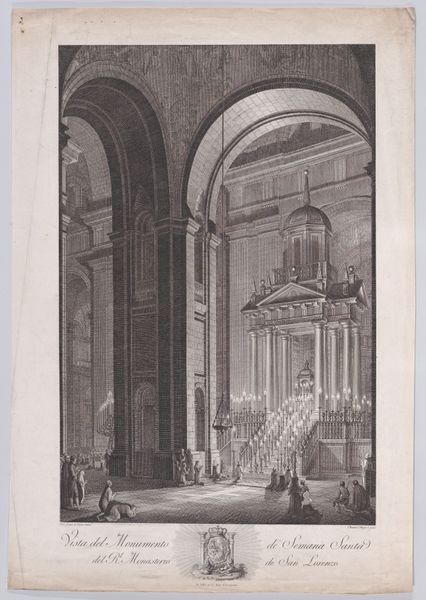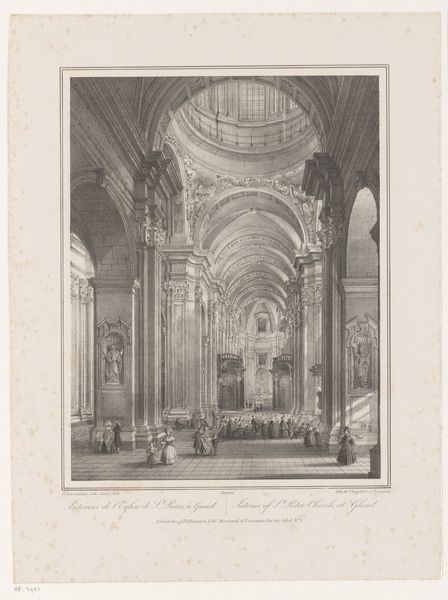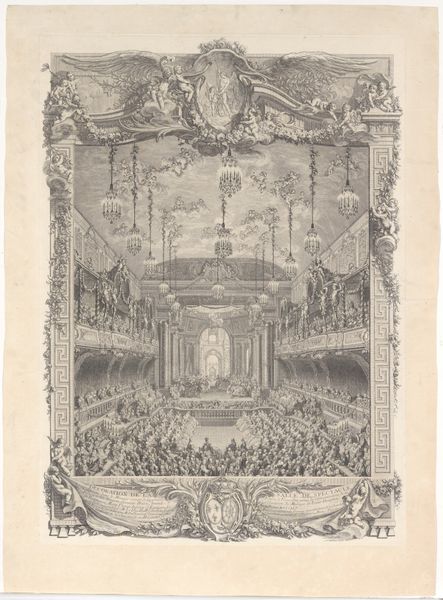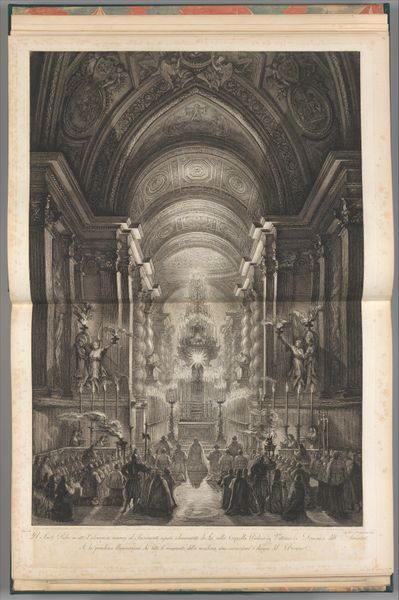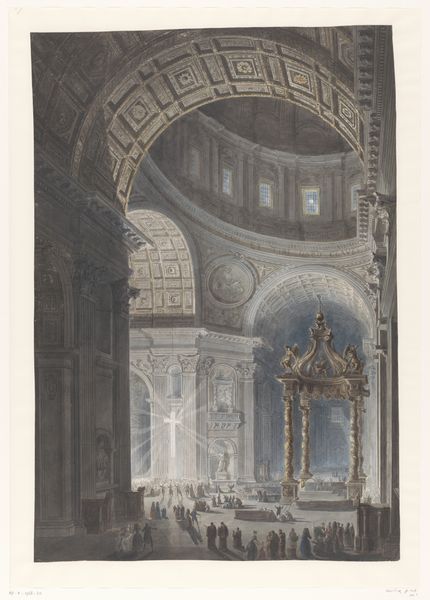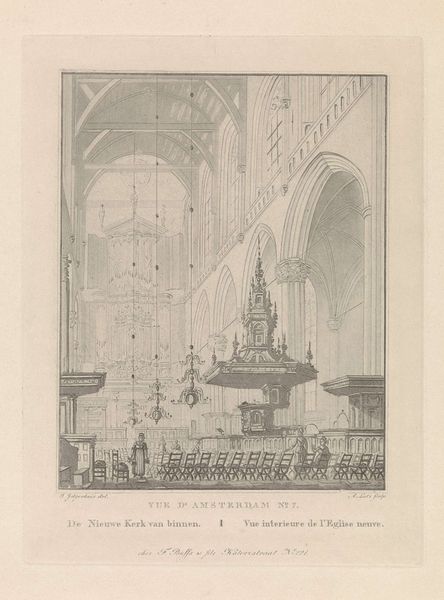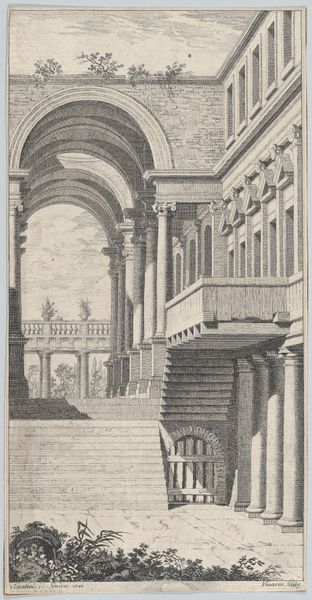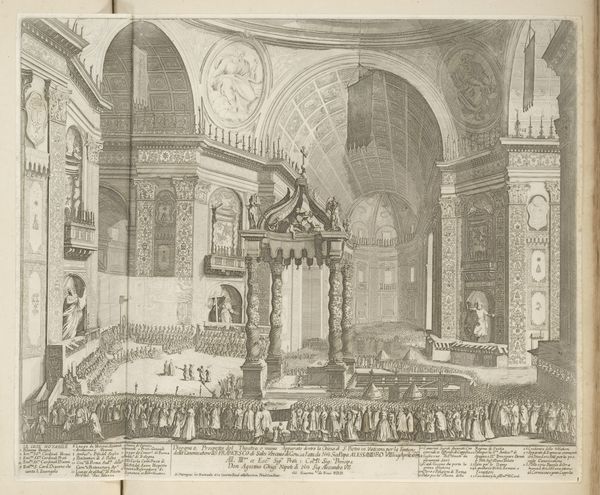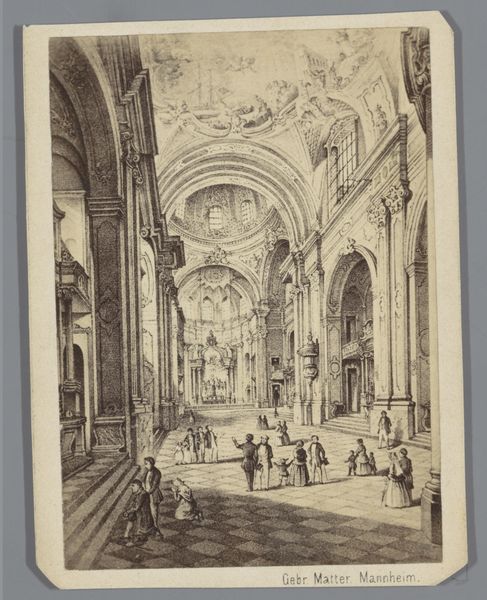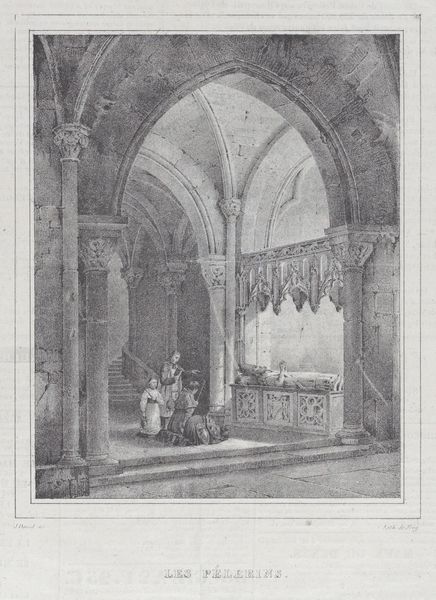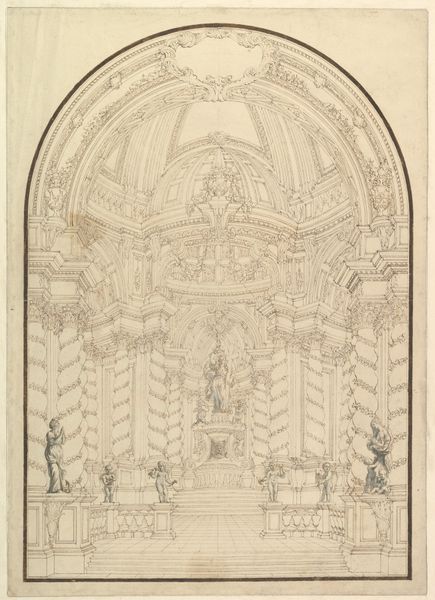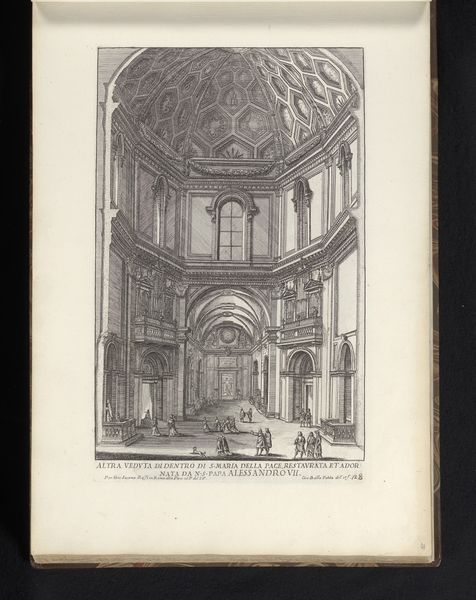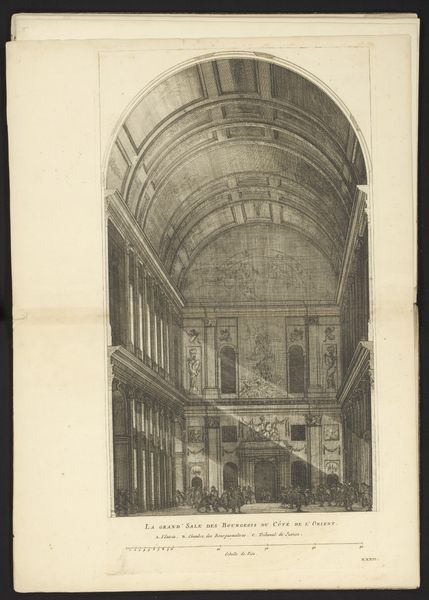
The procession of Corpus Christi in the nave of the Church of the monastery of El Escorial, from a series of Views of El Escorial 1785 - 1795
0:00
0:00
drawing, print, engraving, architecture
#
drawing
#
neoclacissism
# print
#
old engraving style
#
perspective
#
line
#
history-painting
#
engraving
#
architecture
Dimensions: Sheet: 20 11/16 in. × 14 in. (52.5 × 35.5 cm) Image: 17 1/2 × 11 13/16 in. (44.5 × 30 cm)
Copyright: Public Domain
Curator: What strikes you first about this print? For me, it is the imposing structure. Editor: Absolutely! The way the space is delineated using such intricate lines almost feels architectural itself. And the scale of it! It's simultaneously impressive and... a little oppressive, maybe? Curator: Indeed. This is "The Procession of Corpus Christi in the Nave of the Church of the monastery of El Escorial," an engraving by Manuel Alegre, made between 1785 and 1795. Observe how Alegre meticulously crafts a sense of depth, a rigorous perspective which emphasizes the grandeur of the architecture. Editor: And all that detailed work done with engraving tools. One has to imagine the incredible labor involved in creating this image, carving each line individually onto a metal plate. This would have been painstaking repetitive action. Curator: Precisely. Notice also how the architecture itself adheres to Neoclassical ideals: symmetry, order, and a sense of imposing stability. Editor: It also presents a fascinating tension between that meticulously rendered architectural space, so clean and controlled, and the small figures of the procession itself. They become almost swallowed by the building. Curator: Yes, the architectural space becomes a symbol, not merely of religious practice but of power itself. It frames the religious act, thereby lending legitimacy to it. We should think of the church itself as a constructed form, with economic foundations in devotional labor. Editor: And it’s easy to imagine those devotional processes in real time with the granularity this style allows. It presents to a modern eye the processes involved not just in construction, but in artistic production as well. Curator: An excellent point! Both church and print reveal production chains. Editor: I walk away from this with a reinforced appreciation for the artistic work put into representing spaces of such symbolic magnitude, in ways that remind us of both physical craft and artistic vision. Curator: Yes, a convergence of structure and symbolic significance!
Comments
No comments
Be the first to comment and join the conversation on the ultimate creative platform.
